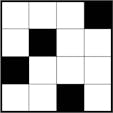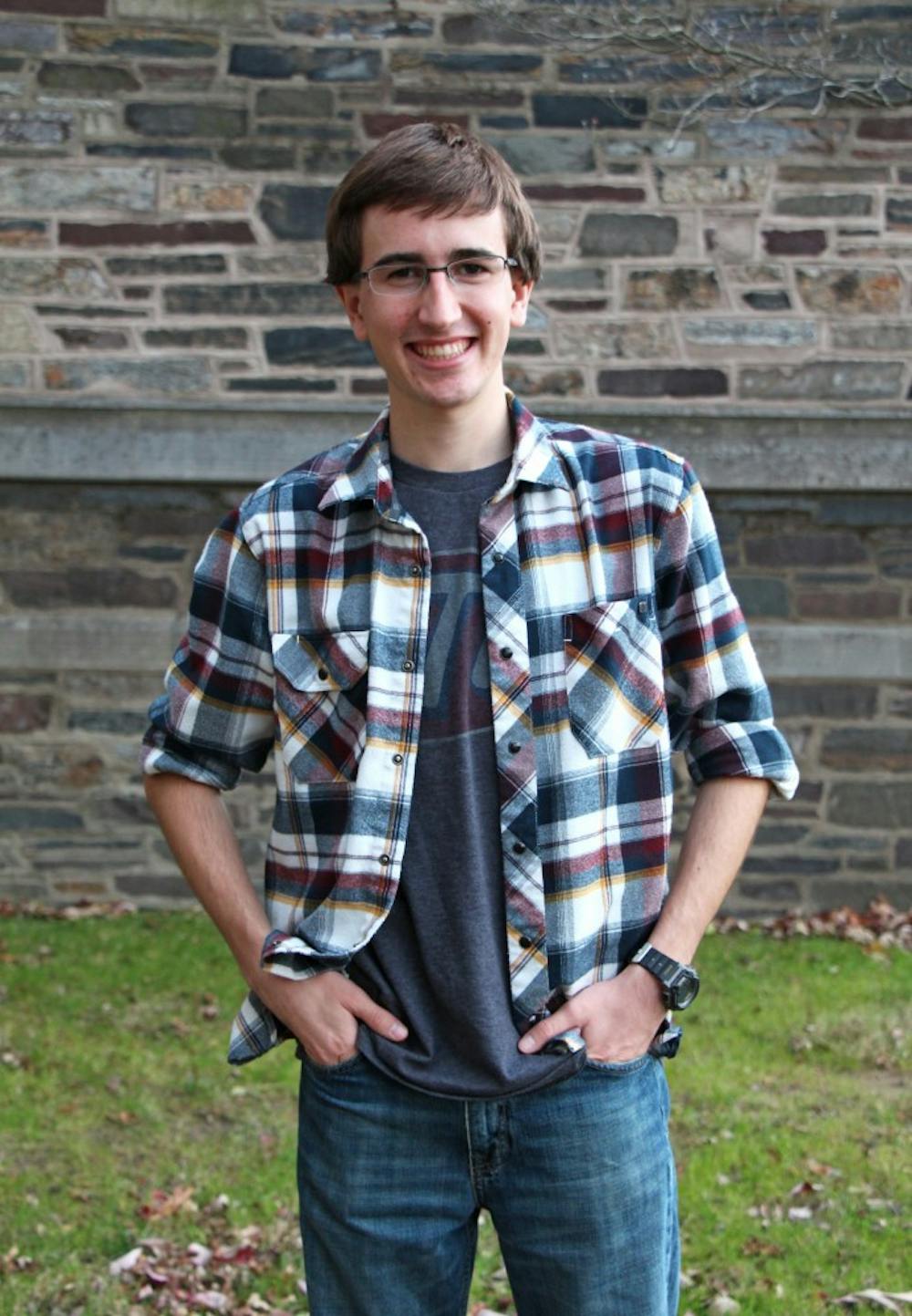Amid the chaos of Cane Spree this October, Colin Lualdi ’17 was trying to ask for a T-shirt. The problem was that no one at the Campus Recreation table could understand him. The staff soon realized that Lualdi was using American Sign Language to convey his request.
“Me and my coworkers were like, 'Oh,' so we quickly wrote it out for him so we could explain to him what to do,” Assistant Director of Campus Recreation/Intramurals Jessica Ward said. As soon as Lualdi left, Ward told herself that Campus Rec needed to include a sign language class among its instructional programs.
As a result of that conversation, an American Sign Language class will be offered on campus next spring for the first time since 2003. Students will take the non-credit course through Campus Rec at Dillon Gymnasium. With the creation of an American Sign Language Table in September and the approval of the Princeton University American Sign Language Club at the Undergraduate Student Government meeting Sunday night, the course accompanies a resurgence in the presence and awareness of Deaf culture on campus.
Increasing programming diversity
The University does not currently recognize American Sign Language as a language that can be taken for credit to fulfill the foreign language requirement. Although Hannah Foster Eaves ’03 introduced a basic non-credit sign language course in 1999 and then-Associate Dean of the College Howard Dobin funded a comprehensive non-credit class through the Student Volunteers Council in 2001, the ASL program faded within several years due to waning interest.
The sign language course to be offered at Dillon Gym marks a divergence from the gym's current fitness-based offerings like dance, yoga and martial arts. Ward said the class reflects her goal to diversify Dillon Gym’s offerings next semester.
“We wanted to do something different and get people in our building that might have only been here maybe for a career fair, or maybe they don't work out extensively,” she explained. “Recreation's not just about physical activities. It's about any activity that relieves stress for you. So what can we offer —what other services can we offer —that would benefit the entire institution?”
An introductory sign language class would aid both deaf and hearing students, Ward said. Along with teaching students a new skill, the class could also help deaf students feel more included on campus by giving them more people to communicate with.
Ward is working with the Office of Disability Services to establish the course. ODS Director Eve Woodman said she and ODS Assistant Director Liz Erickson began looking into American Sign Language in September after Magdalena Henke ’16 emailed Woodman to request a class. Although not deaf, Henke studied German Sign Language for two years in high school. When Woodman and Erickson learned of Ward's project, they reached out to collaborate.
"It's great because [Ward] already has the framework and structure to offer something of this nature, because she does all the programming," Erickson said. In turn, ODS has provided information to help select an instructor, she added. "Between our two offices, I think that we're really both going to be able to make this happen, which is amazing."
‘Deaf’ with a capital ‘D’
Lualdi, currently the only deaf student on campus according to ODS, was born profoundly deaf and learned American Sign Language before English. One of his goals upon coming to Princeton was "to raise awareness about ASL and the Deaf community/culture, especially because there is not as much awareness here as with many other educational institutions in America," Lualdi said in an in-person typed interview with The Daily Princetonian.
One little-known distinction that Lualdi emphasized is the difference between “deaf,” which refers to deafness as a medical condition, and “Deaf,” which refers to “culturally Deaf” people like himself who belong to the Deaf community and take pride in their language and heritage.
ODS provides various accommodations for Lualdi, particularly through sign language interpretation of lectures and University-sponsored events. A pair of interpreters from a Princeton team of eight interpreters switches shifts every 20 minutes. Woodman and Erickson help Lualdi plan his schedule in advance to ensure the presence of interpreters.
Lualdi began his time on campus by spearheading an American Sign Language Table that meets at Whitman on Thursdays from 7-8 p.m. For the project, Lualdi worked closely with Peppar Cyr ’15, who learned American Sign Language her sophomore year after seeing her roommate practice signing. Cyr and her roommate would watch instructional videos online and often sign to each other at breakfast, Cyr said.
Unlike at other language tables, there is a no-speaking rule at the ASL table once participants learn the alphabet and can spell things out to each other.
“If you need to, you can write things down. We will happily very slowly spell things over and over and over again,” Cyr said. “That's what it takes to, you know, teach people new signs ... We're really going for kind of an immersion, at least for the hour once a week.” According to Cyr, the Whitman table attracts 15 to 20 students each session.
Cyr and Lualdi took the ASL table one step further in forming the Princeton University American Sign Language Club, dedicated to American Sign Language and Deaf culture. The USG approved the organization at a Senate meeting last Sunday night. According to Cyr, the focus of the club will be “learning about Deaf culture as opposed to just specifically the language" through initiatives such as ASL classes and speakers, along with the ASL table.
“I'm really excited about this because things are finally actually moving forward. Before there were just ideas and speculation, but now we have the opportunity to get something done, if you know what I mean. This club has lots of potential —I have a feeling that it will grow into something that I could've never imagined in my wildest dreams,” Lualdi said of the approval.
Both Cyr and Lualdi said they hope the growing interest in ASL and Deaf culture will lead to the establishment of an academic for-credit course.
"Building interest on campus was the first step. Then came the ASL table, and then the club. And now the non-credit class," Lualdi explained. According to a 2001 Princeton Alumni Weekly article, a for-credit class would require a host department, approval from the president and funding for a professor.
Princeton among its peers
American Sign Language offerings vary among the University’s peer institutions. Within the Ivy League, Brown University currently provides for-credit sign language courses, and the University of Pennsylvania offers a minor in American Sign Language and Deaf Studies.
A Harvard University student organization called the Committee on Deaf Awareness has offered non-credit courses for several years. The club has been working with administrators to bring the program into an academic department.
At Yale University, students may take American Sign Language individually or in small groups through the Directed Independent Language Study program, which finds teachers for languages not offered for credit, according to the Yale Herald.
A unique language
Michael Stein ’03, a Deaf alumnus who took the informal courses offered at the University as an undergraduate, as well as courses at Harvard Law School, said through an interpreter that a graduate from the Class of 1999 had fought for and obtained accommodations prior to Stein’s arrival at Princeton. The administration assigned Stein someone to transcribe lectures onto a laptop for him to read during class.
Stein said he believes learning American Sign Language would enlighten students just as studying any other language would. "Deaf culture is a culture in its own right, like any other culture. It comes with its own language, customs, stories and jokes, for example," he said through an interpreter.
Eaves, who taught the basic course in American Sign Language coordinated by Dobin and the Student Volunteer Council at the New Jersey School for the Deaf in Trenton, said ASL “deserves equal footing” with other languages.
"When you're looking at somebody speaking ASL or communicating ASL, that's the language center activated, not a gesture recognition center in your brain,” she said, adding that ASL has “its own grammar, its own syntax, its own rules. It's not just learning vocabulary and then layering that vocabulary on English grammar and syntax."
American Sign Language would challenge students more than would foreign languages such as Spanish, Stein said.
"ASL and English are two very different languages," he said. "They differ in grammar and syntax. For example, ASL makes use of non-manual signals such as facial expressions to inflect meaning. ASL also makes use of the space around the signer's body. To become fluent in ASL requires intensive study and exposure to the language.”
Offering an ASL course through Campus Rec “seems like a natural, perfect thing to do” at Princeton, Woodman said, adding that it would put “flesh on [the] skeleton” of ODS’ mission to spread understanding of disability. “The big diversity agenda for this campus is just going to be more normalized,” Woodman noted.
Ward, Woodman and Erickson are considering hiring one of Princeton’s current interpreters as the instructor for the course. Depending on the instructor’s needs, the class could accommodate 20 to 25 students in the Tower Conference Room in Dillon Gym or 100 students in a lecture hall elsewhere on campus, Ward said.
Erickson said she expects the Campus Rec class to receive high interest and a positive reception.
"Students, I think, taking this course will find even after they leave Princeton again that it's something that's made an impression on them in their lives, and you just never know when it's going to pop up again as something that turns out to have been a valuable experience."






